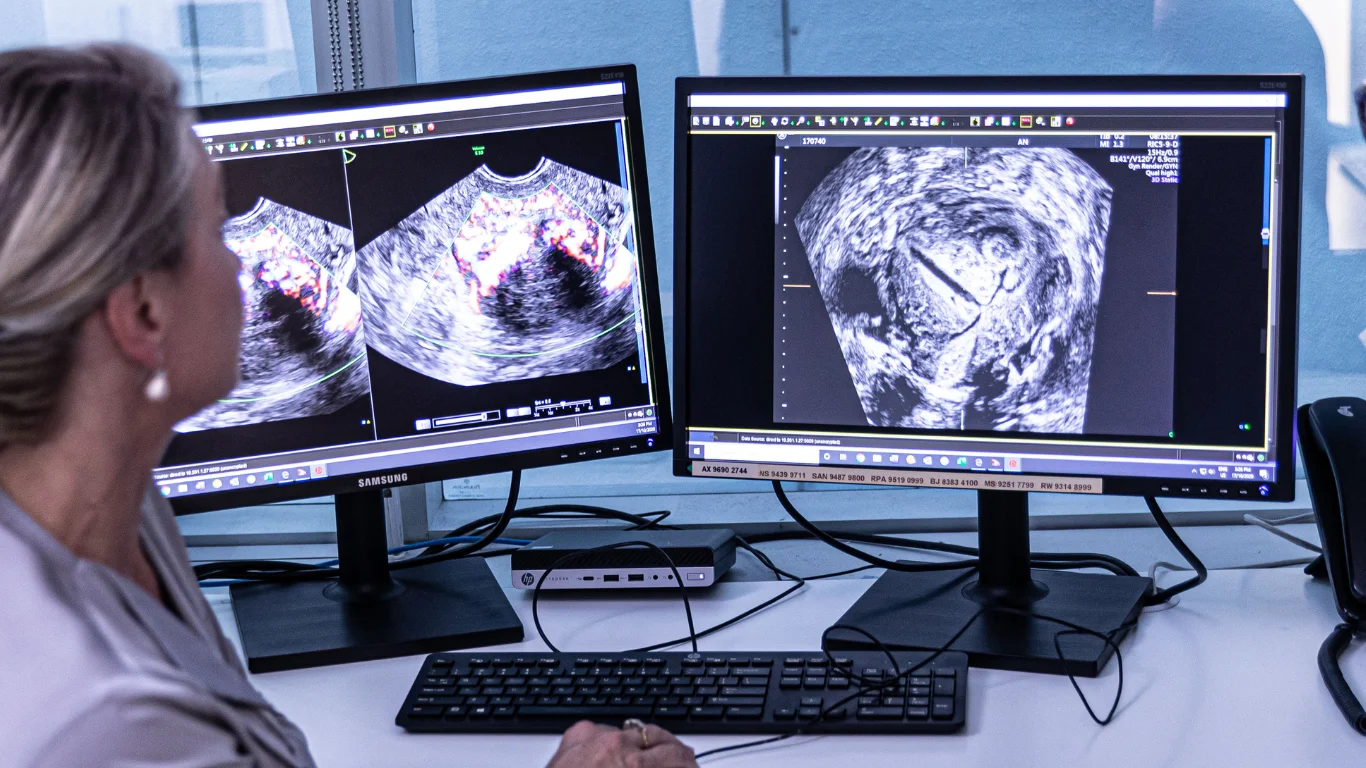Polycystic Ovary Syndrome (PCOS) is a complex hormonal disorder affecting millions of women worldwide. Characterised by hormonal imbalances, irregular periods, and ovaries with multiple small follicles, PCOS can impact fertility and overall health. While diagnosis traditionally relied on clinical symptoms and blood tests, ultrasound imaging has emerged as a crucial tool for accurate diagnosis and management of PCOS.
At Ultrasound Care, we recognise the significance of ultrasound in diagnosing and managing PCOS effectively. In this blog, we delve into the role of ultrasound in understanding PCOS, its diagnostic capabilities, and how it aids in personalised treatment strategies.
Understanding PCOS: A Multifaceted Condition
PCOS is a multifaceted condition with various clinical manifestations. The most common symptoms include irregular menstrual cycles, heavy bleeding, excessive hair growth, acne, weight gain, male pattern baldness and darkening of the skin. The underlying cause of PCOS involves hormonal imbalances, particularly elevated levels of androgens (male hormones), insulin resistance, and ovarian dysfunction.
Diagnosing PCOS can be challenging due to its diverse presentation and overlapping symptoms with other conditions. If your family doctor or gynaecologist believes you have PCOS as you have two out of the three main criteria, to confirm your diagnosis they will arrange for a blood test and refer you for a pelvic ultrasound.
The Role of Ultrasound in PCOS Diagnosis
Ultrasound imaging offers a non-invasive and accessible means to visualise the ovaries and assess their structure and function. Transvaginal ultrasound, in particular, provides high-resolution images, allowing for detailed examination of ovarian morphology.
In PCOS diagnosis, ultrasound enables identification of the number of antral follicles present in the ovary. The normal ovary usually contains several follicles. Some ovaries have more than the expected number of follicles and if the number is more than 20, in the absence of any hormonal stimulation then ovaries may have a polycystic appearance. If polycystic ovaries are associated with other hormonal problems doctors call this “polycystic ovarian syndrome”. Many women have polycystic looking ovaries however they do not have the syndrome.
Ultrasound-Guided Management of PCOS
Beyond diagnosis, ultrasound plays a crucial role in guiding the management of PCOS. By monitoring changes in ovarian morphology and follicular dynamics, ultrasound facilitates personalised treatment strategies tailored to individual patient needs.
For women with PCOS seeking fertility treatment, ultrasound monitoring during ovulation induction allows clinicians to assess follicular growth, predict ovulation, and optimise timing for assisted reproductive techniques such as intrauterine insemination (IUI) or in vitro fertilization (IVF).
Harnessing Ultrasound for Comprehensive PCOS Care
In conclusion, ultrasound imaging is indispensable in the diagnosis and management of Polycystic Ovary Syndrome (PCOS). By visualising ovarian morphology, assessing follicular dynamics, and guiding treatment interventions, ultrasound enhances our understanding of PCOS and enables your doctor to provide personalised care tailored to individual patient needs. At Ultrasound Care, we remain committed to leveraging the power of ultrasound to empower women with PCOS towards better reproductive outcomes.






